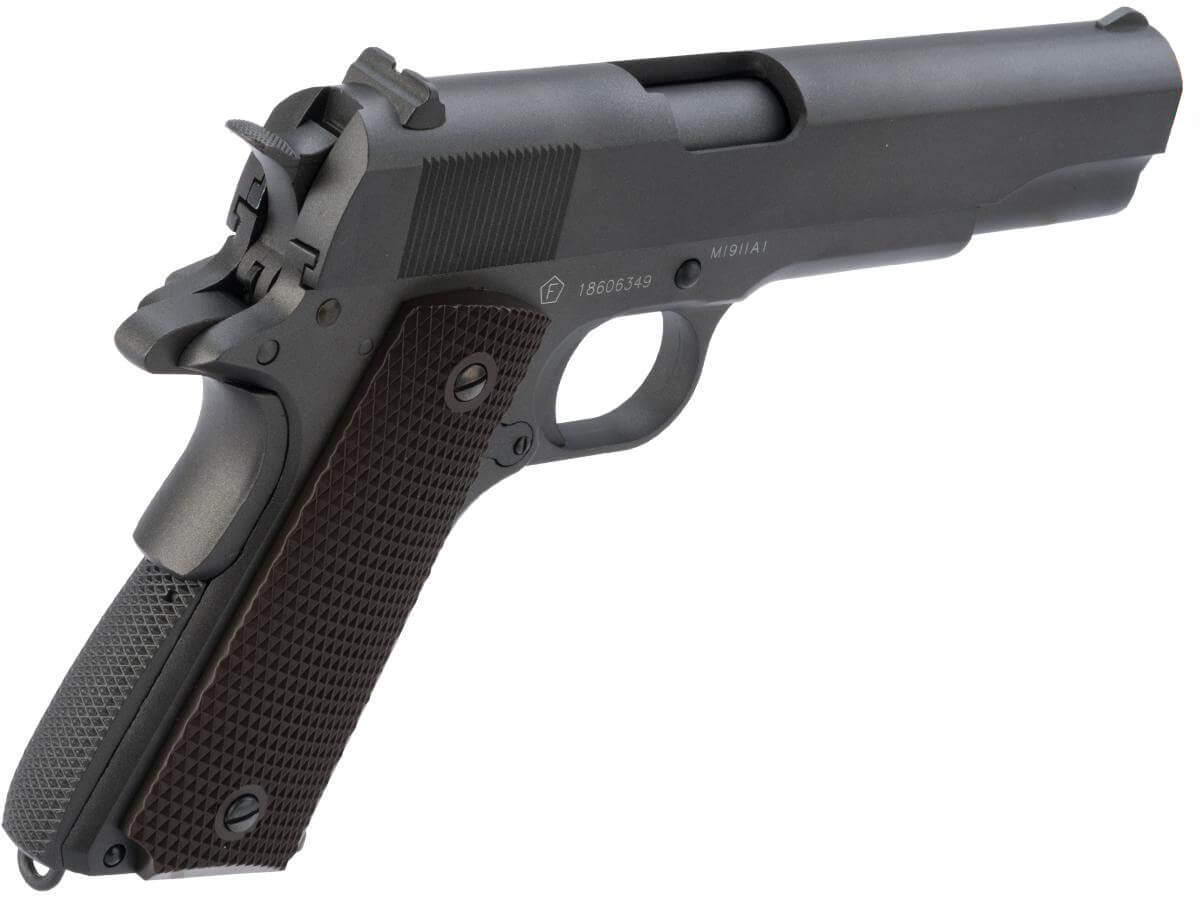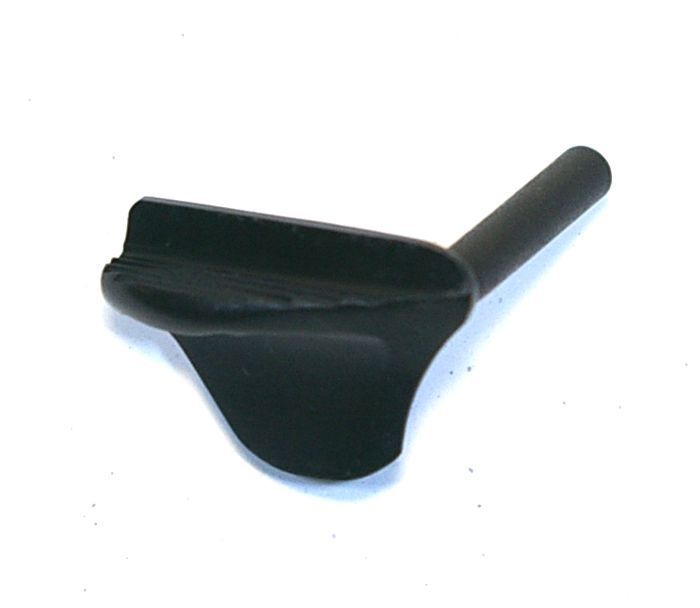
Like the magazine release and slide stop, the thumb safety is of the short “GI” style, and the pistol is fitted with the traditional Commander-style rowel hammer. Other than the aforementioned grip safety, the pistol lacks the extended controls that are considered de rigueur by many 1911 shooters today. I mean, why screw around with something that has worked just fine for 100-plus years? The recoil system is just the way John Moses Browning designed it. The Colt Wiley Clapp Stainless Commander has a 4.25-inch, stainless, National Match barrel. This is exactly the type of setup I prefer on handguns, as it allows you to line up the sights quickly and acquire the target without trying to line up those three white dots most pistols now come equipped with. The pistol features a plain black Novak LoMount rear sight while the Novak front sight blade features a brass bead. When combined with the 25-lpi checkering on the frontstrap and mainspring housing you get an extremely firm purchase on the pistol even with wet hands or when wearing gloves. They are smooth except for finely checkered sections that match up with the three fingers that actually wrap around the grip. The Commander is fitted with some of the most unique-looking grips I’ve ever seen. It also has the features that are considered mandatory on a combat 1911 today, including an extended beavertail grip safety with a palm swell, an undercut triggerguard to allow the shooter to get a higher grip on the pistol for better handling and recoil control, a lowered and flared ejection port to get rid of spent cases reliably and an aggressively beveled magazine well to smooth out reloading. Which is exactly what you would want on a pistol designed to be carried concealed. The pistol’s stainless finish was flawless yet subdued. When I opened the parcel it arrived in, I was impressed by the fact that the 1911 was both plain looking and very attractive. I recently had the opportunity to run one of the Colt Wiley Clapp Stainless Commanders through its paces. Or, as Wiley put it so well, these 1911s contain “Everything you need, nothing you don’t.” Details
Colt 1911 a1 stainless steel series#
TALO asked for Wiley’s input in designing a series of Colts intended for serious defensive purposes, and while the four resulting pistols are indeed attractive, they do not contain any superfluous accessories or ornamentation. He’s become a well-known member of the firearms world, contributing to many magazines and publishing a number of books on handguns and law enforcement weapons and tactics. Army and as a police officer for many years. Some of the most recent are Colt’s line of Wiley Clapp 1911s, including the Wiley Clapp CCO, Lightweight Commander, Stainless Commander and Government Model. It commissions limited editions of firearms from various manufacturers and distributes them to stocking sporting goods dealers across the U.S. Wiley’s Ownįor those wondering, TALO is a wholesale buying cooperative that was started in 1965 by fishing and hunting wholesalers in Texas, Arkansas, Louisiana and Oklahoma. In 1970, Colt introduced the steel-framed Combat Commander and the original pistol was re-baptized as the Lightweight Commander.ĭuring its 65-year production life, Colt has offered several variations of the Commander, with the most recent being the Wiley Clapp Stainless Commander, which is available exclusively through TALO distributors. The Commander was an instant hit with those 1911 aficionados who wanted a smaller, lighter pistol for concealed or uniformed carry. It was the first large aluminum-framed pistol in major production, and the first Colt pistol to be chambered in 9mm, though. In 1950, Colt moved its candidate into regular production as the Colt Commander. None of them met the military’s requirements, which resulted in the M1911 remaining standard issue for another three-plus decades.


Colt entered a modified version of its M1911 pistol that was chambered in 9mm, had an aluminum alloy frame, a shorter 4.25-inch barrel, weighed 27 ounces and utilized a nine-round magazine. Candidates included Browning Hi-Power variants from the John Inglis firm of Canada, which had produced Hi-Powers during WWII, and Belgium’s Fabrique Nationale, while Smith & Wesson entered what would become its Model 39 five years later.


 0 kommentar(er)
0 kommentar(er)
